Marketing
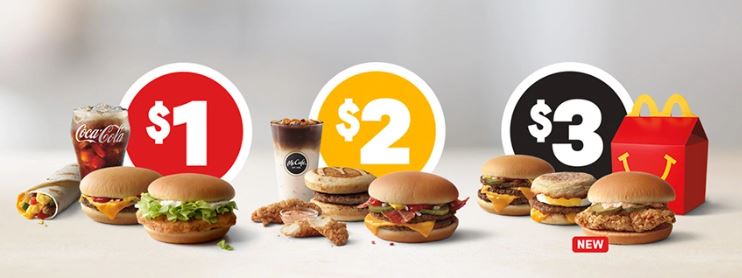
McDonald’s segmentation, targeting and positioning is one of the integral components of its marketing strategy. Segmentation involves dividing population into groups according to certain characteristics, whereas targeting implies choosing specific groups identified as a result of segmentation to sell products. Positioning refers to the selection of the marketing mix the most suitable for the target customer segment. McDonald’s uses the following types of segmentation: 1. Multi-segment positioning. The fast food chain exploits multiple segments in terms of geography and demographics at the same time. The fast food giant develops items that appeals to the needs and preferences of each segment. 2. Adaptive positioning. McDonald’s periodically repositions its products according to changes in customer tastes and preferences. For instance, reflecting increasing health concerns by customers the fast food chain introduced a number of healthy items in its menu such as Fruit & Maple Outmeal and Southwest Grilled Chicken Salad. The following table illustrates McDonald’s segmentation, targeting and positioning: Type of segmentation Segmentation criteria McDonald’s target segment Geographic Region Operating in 119 countries Density Urban/rural Demographic Age 6 – 70 Gender Males & Females Life-cycle stage Bachelor Stage: young, single people not living at home Newly Married Couples: young, no children Full Nest II: youngest child six or over Income Low and middle Occupation Students, employees, professionals Behavioral Degree of loyalty ‘Hard core loyals’ and ‘Switchers’ Benefits sought Cost benefits, time efficiency Personality Easygoing& careless User status Potential and regular fast foodeaters Psychographic Social class Lower, working and middle classes Lifestyle McDonald’s targets Resigned, Struggler and Mainstreamer individuals according to Cross Cultural Consumer Characterization developed by Young & Rubican McDonald’s segmentation, targeting and positioning Important aspects of the target customer segment as illustrated in table above serve as the main guiding principle for McDonald’s marketing management to deal with Product, Place, Price,…
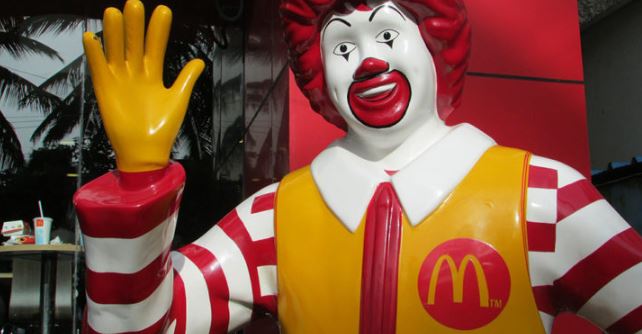
McDonald’s marketing strategy is based on the following principles: 1. Think globally, act locally. McDonald’s is a truly global company with 40,031 restaurants in in119 countries.[1] The fast food chain is famous for standardisation of a wide range of business processes. Specifically, the company attempts to adjust its menu, as well as, restaurants settings to the tastes and preferences of local consumers. For example, it serves McSpaghetti in Philippines, Chicken Parm in Australia, Cookie and Cream Pie in Malaysia, Gracoro Burger in Japan and the list goes on. 2. Extensive focus on print and media advertising. The fast food giant focuses on print and media adverting component of marketing mix to a greater extent compared to other components. Specifically, McDonald’s advertising costs totalled USD 82.9 million, USD 329.2 million and USD 81.5 million for 2021, 2020 and 2019 respectively.[2] The marketing message attempts to associate the brand with enjoying tasty food and sharing goods moments with loved ones. 3. Targeting the widest range of customer segment. McDonald’s segmentation, targeting and positioning strategy attempts to appeal to the needs and preferences to the wide range of customers in terms of geographic location, demographic, behavioural, as well as, psychographic traits. 4. Cost leadership strategy. Within the framework of marketing communication mix (also known as 7Ps of marketing) McDonald’s prioritizes price over other elements. In fact, enjoying tasty food served in short duration of time is fast food chain’s unique selling proposition. The tasty food served by the company is often not a healthy one, but this is a separate issue impacting the brand. McDonald’s Corporation Report contains the above analysis of McDonald’s marketing strategy. The report illustrates the application of the major analytical strategic frameworks in business studies such as SWOT, PESTEL, Porter’s Five Forces, Value…
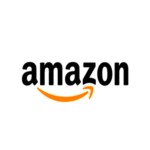
Amazon marketing communication mix deals with individuals elements of the marketing mix such as print and media advertising, sales promotions, events and experiences, public relations and direct marketing. Amazon Print and Media Advertising Amazon uses print and media advertising extensively in order to communicate its marketing message to the members of the target customer segment. The most memorable Amazon TV ads include a video clip featuring former Top Gear host Jeremy Clarkson promoting Amazon Fire TV, a promotion deal reported to cost Amazon GBP 160 million[1]. Moreover, TV commercials promoting Amazon feature cute animals in order to associate the brand image with qualitative values. This strategy indicates to changes in Amazon marketing message in a way that “rather than hawking hardware like Kindle e-readers, furry pets are pitching Amazon’s USD 99,00 Prime membership, which features delivery discounts and media streaming”[2]. The online retail giant had also released “Mom’s Here” TV advertisement on Oprah Winfrey Network, targeting mothers for Amazon Echo. In 2019 Amazon overtook Netflix as the top advertiser for video streaming services and increased TV advertisement spending by 28% for Amazon Prime Video.[3] Print advertising is used by Amazon extensively as well via magazines, journals, newspapers and billboards. In the latest move, Amazon started to print advertisement messages, pictures and cartoon characters from “Minions” movie on its shipping boxes[4], marking the start of a new type of print advertising. One of the most memorable print advertisements by Amazon refers to the ad that appeals to Aatmanirbhar Bharat (self-sufficient India) sentiment featured in The Economic Times in 2020. This specific campaign has been praised as a successful attempt to show solidarity with nationalistic sentiment in India. Viral marketing also plays an important role in Amazon marketing strategy. Amazon is one of the earliest adopters of viral marketing and the…

Amazon marketing mix (Amazon 7Ps of marketing) comprises elements of the marketing mix that consists of product, place, price, promotion, process, people and physical evidence. Product Element in Amazon Marketing Mix (AMAZON 7Ps of Marketing) Amazon products can be divided into the following four categories: 1. Amazon websites that enable hundreds of millions of products to be sold by Amazon and by third parties across dozens of product categories. Due to the abundance of ranges of products it sells, Amazon has gained the moniker The Everything Store. In 2020 third party sellers made a profit of minimum USD 25 billion.[1] There are more than 200 million Paid Prime members.[2] 2. Electronic devices such as Kindle e-readers, Fire tablets, Fire TVs, and Echo. In 2020, customers bought tens of millions of Echo devices, and Echo Dot and Fire TV Stick with Alexa.[3] There are more than 100 million smart home devices connected to Alexa.[4] 3. Media content. An extensive range of products and services, including cloud-based services that can be used to produce content. The e-commerce giant is planning to increase the range and variety of its media content products. According to new CEO Andy Jassy it is still early days for Amazon in the media.[5] The company has reached a deal to acquire US historic movie studio MGM for USD 8,5 billion[6], as a sign of increasing focus on the media business. 4. Amazon Web Services (AWS). This segment offers a wide range of global compute, storage, database, and other service offerings. AWS serves developers and enterprises of all sizes, including start-ups, government agencies, and academic institutions. The e-commerce giant also completed the acquisition of Whole Foods Market in 2017. Place Element in Amazon Marketing Mix (AMAZON 7Ps of Marketing) Traditionally, Amazon didn’t have physical stores and the…
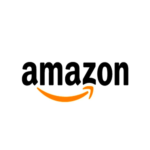
Amazon segmentation, targeting and positioning involves a set of activities aimed at determining specific groups of people as customers and developing products and services attractive to this group. Segmentation involves dividing population into groups according to certain characteristics, whereas targeting implies choosing specific groups identified as a result of segmentation to sell products to. Positioning refers to the selection of the marketing mix the most suitable for the target customer segment. Amazon mainly uses the following two types of positioning: Multi-segment positioning. Amazon offers a wide range of products and services, successfully exploiting more than one segment at the same time. Specifically, the online retail giant sells more than 75 million products, appealing to the needs and wants of a wide range of customer segments.[1] Adaptive positioning. The online retail giant closely monitors changes in external marketplace and addresses increasing customer expectations by periodically repositioning of products and services according to changes in the segment. Anticipatory positioning. This refers to positioning to a market segment that has low turnover with the anticipation that the turnover will increase in the future. Amazon Web Services (AWS) is a stark example for anticipatory positioning. Company’s founder and former CEO Jeff Bezos notes that “no one asked for AWS. No one. Turns out the world was in fact ready and hungry for an offering like AWS but didn’t know it”[2] Additional examples of anticipatory positioning applications by the e-commerce giant include Amazon Sage Maker, Amazon Comprehend and Amazon Rekognition. Stop-gap positioning This strategy involves investing in currently unprofitable brand due to profitability expectations on long-term perspective. The e-commerce giant applied stop-gap positioning strategy in relation to a number its brands such as Core 10, Happy Belly and Vedaka. The following table illustrates Amazon segmentation, targeting and positioning: Type of segmentation Segmentation criteria Amazon target…
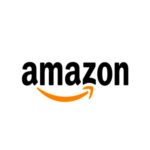
Amazon marketing strategy relies on the following four pillars: 1. Offering the widest range of products. The largest internet retailer in the world by revenue offers hundreds of millions of products. The wide range of product it offers has earned the online retailer the moniker The Everything Store. 2. Using customer-friendly interface. The tech giant has an advanced interface that integrates personalized recommendations and recent browsing history, among others. Ever-improving user interface is the result of the company’s focus to become Earth’s most customer-centric company. 3. Scaling easily from small to large. The e-commerce and cloud computing company has experience and competence in scaling from small to large. This factor plays in instrumental role exploring new business segments. Scaling from small to large has allowed the online retail behemoth do disrupt increasing ranges of industries such as retail, transportation, entertainment and now industrial distribution. 4. Exploiting affiliate products and resources. Up to date, the tech giant has taken a full advantage of affiliate programs, products and resources to contribute to the bottom line of the business. Amazon marketing strategy integrates a number of targeted online marketing channels, such as Associates program, sponsored search, social and online advertising, television advertising, and other initiatives. Generally, Amazon marketing strategy is based on the following principles: Amazon 7ps of marketing mainly focuses on product and place elements of the marketing mix. Offering hundreds of millions of products in the USA alone, Amazon product range is the widest among online and offline retailers. Moreover, the company is able to offer its products for competitive prices due to massive cost savings based on online nature of business operations. Amazon segmentation targeting and positioning practices are associated with targeting the widest customer segment. The retail giant does this with the application of multi-segment, adaptive, anticipatory and stop-gap…
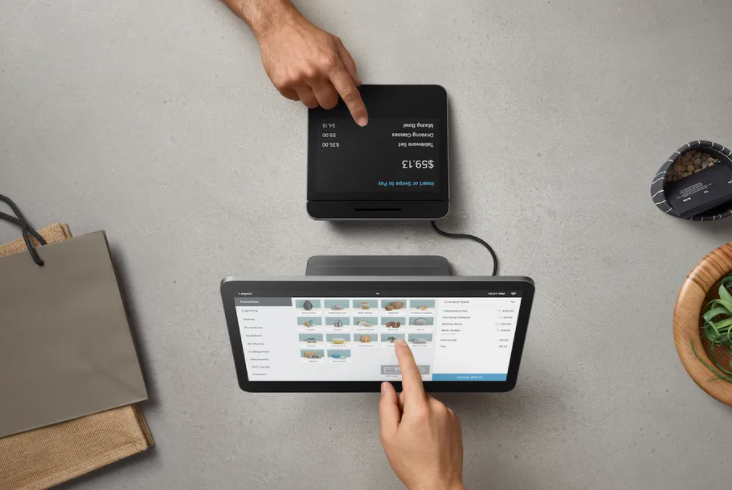
As a financial unicorn, Square was able to develop an effective ecosystem of payments products and services and gain an international acclaim. An effective marketing strategy plays an important role behind the phenomenal rise of the fintech. Sales and marketing expenses for the year ended December 31, 2019, increased by USD213.7 million, or 52%, compared to the year ended December 31, 2018. Total advertising costs for the three months ended March 31, 2021 and 2020, were USD85.9 million and USD36.2 million[1], respective. Square marketing strategy is based on the following principles: 1. Effective use of Freebies. Square offers peer-to-peer money transfer service to its Cash App customers for free as a marketing strategy. This strategy encourages extensive usage of Cash App which includes Cash Card among other features. 2. Reliance on Referrals as a marketing strategy. According to Square’s Referral Program if a customer refers her friend, both benefit from rewards. Rewards include credits on processing fees up to USD1.000 in sales over the next six months and discounts for certain type of products.[2] This program effectively contributes to the overall volume of revenues. 3. Attractive design of products. Square products are designed in a minimalistic, yet attractive manner. Designers at the B2B fintech are given a great degree of autonomy and they prioritise simplicity in their work. Square card readers, terminals, register and accessories usually attract customers’ attention due to their slick design and they effectively contribute to the overall design of small and medium business premises they are used by. 4. Content marketing. Focusing on content marketing on the basis of customer stories is one of the main pillars of Square marketing strategy. “The Square marketing team targeted tech- and social-media-savvy shop owners in the Bay Area, and these early customers helped them spread the word”[3] Nowadays,…
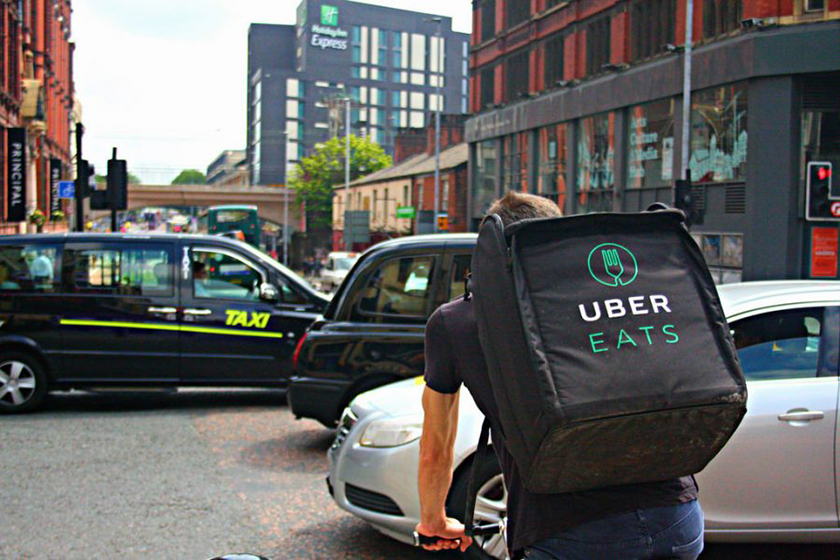
Uber marketing mix (Uber 7Ps of marketing) comprises elements of the marketing mix that consists of product, place, price, promotion, process, people and physical evidence. Product Element in Uber Marketing Mix (Uber 7PS of Marketing) Uber is a service company and it does not sell products. Uber has clear advantages over regular taxi. These include clear overview of pricing prior to booking, one-tap rides, following drivers on map, cashless convenience and fare splitting, as well as feedback options. The range of services offered by Uber with brief descriptions is illustrated in table below: Service Descrption X Low cost option for the passengers looking for low cost rides for up to 4 riders XL Low cost option for the passengers looking for low cost rides for up to 6 riders Pool Car sharing: riders can bring one other person with them, thus saving on travel costs GO Ride in a hatchback Comfort Newer cars with extra legroom Flash Match with closest Uber Taxi or UberX AUTO Ride in Auto rickshaws, currently available in Bangalore and Pune only Access Taxi service with wheelchair access to cater to the need of elderly and people with disabilities. MOTO Booking bike rides around the city Premium A fleet of stylish vehicles to choose from. Uber Premium comprises Uber SELECT, Uber BLACK, Uber SUV and Uber LUX Green Sustainable rides in electric vehicles Scooters Electric scooters to help people to get around a city Transit Real-time public transit information in the Uber app WAV Rides in wheelchair-accessible vehicles RUSH Courier Package Service EATS Allows customers to order food on the go Uber services and descriptions Place Element in Uber Marketing Mix (Uber 7PS of Marketing) Uber is available in 71 countries around the globe.[1] The service has a high level of geographic concentration. In…
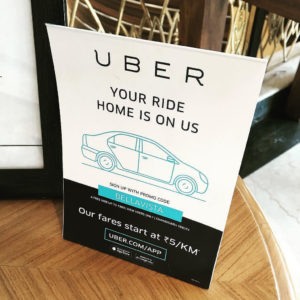
Uber marketing communication mix comprises print and media advertising, sales promotions, events and experiences, public relations and direct marketing. Uber marketing communication mix is aimed to associate using Uber services with cost-efficiency, effectiveness and convenience. Uber Print and Media Advertising Uber uses traditional print and media advertising sparingly, mainly concentrating on social media and word-of-mouth marketing channels. Nevertheless, the global taxi technology company still uses TV ads, newspapers and magazine ads, posters and banners in selected locations. The ride-hailing giant is known for unconventional advertising techniques. These include putting ads on drones and having them taunt drivers stuck in traffic in Mexico City.[1] Marketing campaign “Boxes” as metaphor for excessive traffic jams in Asian cities, where the ad proposes ridesharing as a key part of the solution has been praised as innovative and appealing.[2] At the same time, Uber’s use of advertising has proved to be controversial in several instances. For example, a billboard in Egypt which says “I escaped from driving my mother-in-law home 64 times” was found to be offensive by local people[3]. In France, campaign offering men free rides with ‘incredibly hot chicks’ has been criticized as sexist, resulting in an apology from Uber France.[4] Recently, the largest mobility platform in the world started advertising Uber Eats services through selected radio channels in selected locations promoting earning potential through the service. Uber also uses celebrity endorsement in print and media advertising in an occasional manner. For instance, in 2018 the company signed an endorsement deal with Virat Kohli, captain of India’s cricket team to serve as Uber brand ambassador in India.[5] Uber Sales Promotions Uber uses various sales promotions techniques in an integrated manner. For the largest mobility platform in the world discounts, loyalty programs, promotions, refunds, and credits provided to end-users who are not customers totalled USD…
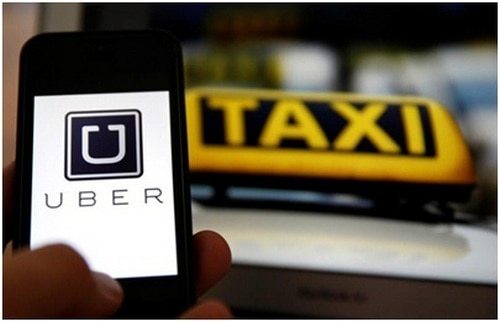
Uber segmentation, targeting and positioning can be specified as the essence of Uber marketing strategy. Segmentation involves dividing population into groups according to shared characteristics, whereas targeting implies choosing specific groups identified as a result of segmentation to sell products. Positioning refers to the selection of the marketing mix the most suitable for the target customer segment. Uber uses the following positioning methods: 1. Multi-segment positioning. Uber uses multi-segment type of positioning and accordingly, targets several customer segments with different levels of service. The ride-hailing giant offers economy services such as Uber X, Uber XI and Uber Pool for cost-conscious customers. At the same time, Uber PREMIUM consisting of fleet of stylish vehicles is available for customers who don’t mind to pay more. 2. Stop-gap positioning. Stop-gap positioning involves investing in currently unprofitable brands with profitability expectations in long term-perspective. Uber used this positioning method for its Advanced Technologies Group (ATG) business unit. Specifically, the ride-hailing giant invested hundreds of millions of USD in the development of autonomous self-driving cars. However, the project did not generate expected results and ATG unit was sold to Aurora Innovation Inc. in January 2021. The following table illustrates Uber segmentation, targeting and positioning: Type of segmentation Segmentation criteria Uber target customer segment Uber X, Uber XI, Uber pool, Uber-MOTO, Uber AUTO Uber Premium, Uber Go, UberEATS, Uber BOAT, UberRUSH Uber Access Geog-raphic Region North & South America, Asia, & New Zealand Australia, Europe, Africa Uber AUTO – Bangalore and Pune Only North & South America, Asia, & New Zealand Australia, Europe, Africa North & South America, Asia, & New Zealand Australia, Europe, Africa Density Urban/rural Urban/rural Urban/rural Demog-raphic Age 18+ 25-65 45-65 Gender Males & Females Males & Females Males & Females …
